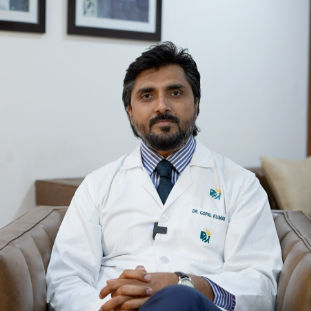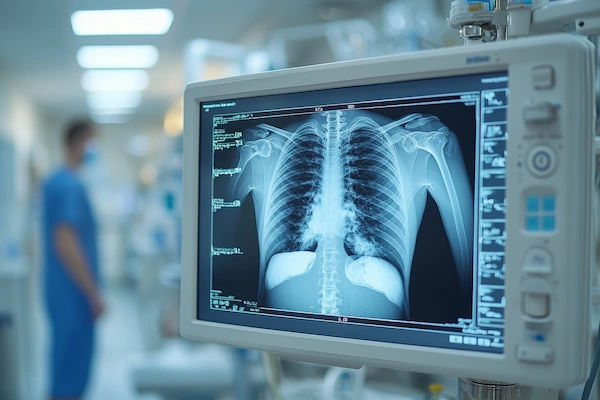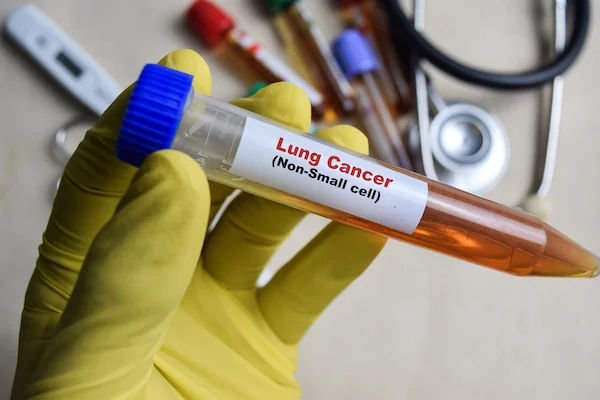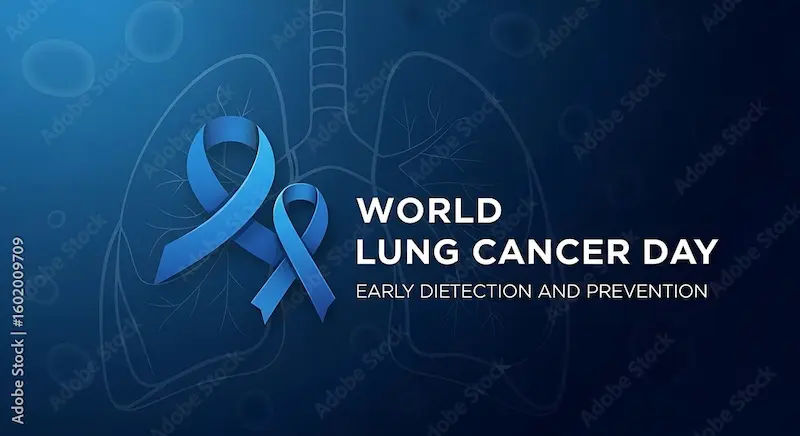Guide to Targeted Therapies For Lung Cancer Treatment
Explore targeted therapy for lung cancer with this comprehensive guide. Learn how it works, who it’s for, biomarker testing, benefits, side effects, and future advances.


Introduction
A lung cancer diagnosis can feel overwhelming, but the landscape of treatment has undergone a revolutionary shift. Gone are the days when chemotherapy was the only option for advanced disease. Today, we are in the era of precision medicine, and at its heart are targeted therapies. Unlike traditional treatments that affect all rapidly dividing cells, targeted cancer therapies are designed to specifically identify and attack cancer cells based on their unique genetic characteristics. Think of it as a smart key designed for a specific lock, found only on the cancer cells. This guide will walk you through everything you need to know about these groundbreaking treatments. We’ll explore how they work, who they are for, the crucial role of biomarker testing, their benefits, side effects, and what the future holds. Understanding these options empowers you to have more informed conversations with your healthcare team about your personalised care plan. If you have questions after reading, consulting an oncologist from Apollo24|7 can provide clarity tailored to your specific situation.
What Are Targeted Therapies and How Do They Differ from Chemotherapy?
For decades, chemotherapy has been a cornerstone of cancer treatment. It works by killing cells that divide rapidly, a hallmark of cancer cells. The drawback is that it can’t distinguish between a cancer cell and other healthy, fast-dividing cells in the body, such as those in hair follicles, the mouth, and the digestive tract. This leads to well-known side effects like hair loss, nausea, and low blood cell counts.
Targeted therapies represent a more sophisticated approach. They interfere with specific molecules (called "targets") that are involved in the growth, progression, and spread of cancer.
The "Smart Bomb" vs. "Scorched Earth" Analogy
A simple way to understand the difference is through a military analogy:
- Chemotherapy is like a "scorched earth" campaign, affecting a wide area to destroy the enemy (cancer cells) but also
causing significant collateral damage to friendly territory (healthy cells). - Targeted Therapy is like a "smart bomb" or a precision-guided missile. It is programmed to seek out and destroy only
enemy installations (specific proteins or genes in cancer cells) with minimal impact on the surrounding area.
The Goal: Precision and Personalisation
The ultimate goal of targeted cancer drugs is to make treatment more effective and less toxic. Because these drugs are selected based on the specific genetic profile of a patient's tumour, this is often called "personalised" or "precision" medicine. It means two people with the same type of lung cancer might receive completely different treatments based on the unique mutations found in their tumours. This personalised approach has dramatically improved outcomes for many patients with advanced lung cancer.
Get Your Health Assessed
The Critical First Step: Biomarker Testing for Lung Cancer
Targeted therapy is not for everyone. The single most important step in determining if you are a candidate is comprehensive biomarker testing (also known as molecular or genetic testing).
What is a Biomarker? Understanding Genetic Mutations
A biomarker is a biological molecule found in blood, other body fluids, or tissues that is a sign of a normal or abnormal process, or of a condition or disease. In lung cancer, biomarkers are often specific genetic mutations or alterations within the cancer cells that drive the cancer's growth. These are not mutations you are born with, but ones that develop in the cells over your lifetime, leading to cancer.
Common Lung Cancer Biomarkers and Their Targets
For non-small cell lung cancer (NSCLC), which accounts for about 85% of cases, several key biomarkers have been identified:
- H4: EGFR Mutations: The epidermal growth factor receptor (EGFR) is a protein that helps cells grow. A mutation in
the EGFR gene can cause it to be constantly "on," leading to uncontrolled cell division. Targeted therapies for EGFR
(like osimertinib, erlotinib) block this signal. - H4: ALK Rearrangements: In about 5% of NSCLC cases, a piece of the ALK gene breaks off and attaches to another gene, creating a new, cancer-driving gene. Drugs called ALK inhibitors (like crizotinib, alectinib) are highly effective against this.
- Other Key Biomarkers: These include rearrangements in the ROS1 gene, mutations in the BRAF, KRAS, MET, and
RET genes, among others. Each has corresponding targeted drugs designed to inhibit them.
How and When is Biomarker Testing Done?
Testing is typically done on a sample of the tumour obtained from a biopsy or surgery. Sometimes, a "liquid biopsy"—a simple blood test that detects cancer DNA—can be used. It is crucial that this testing is performed at the time of diagnosis for advanced NSCLC. If your initial test did not find a biomarker, discuss with your doctor if testing on a new sample is possible, as science is constantly evolving. Apollo24|7 offers convenient home collection for various tests and can coordinate with specialists for comprehensive diagnostic planning.
Get Your Health Assessed
How Targeted Drugs Work: Main Mechanisms of Action
Targeted therapies attack cancer in several clever ways. The two main categories are small-molecule drugs and monoclonal antibodies.
Tyrosine Kinase Inhibitors (TKIs): The Pill You Take at Home
This is the most common form of targeted therapy for lung cancer. TKIs are small molecules that can easily enter cells and block the signals (often from tyrosine kinases) that tell the cancer cell to grow and divide. The major advantage of TKIs is that they are usually taken orally, as a pill, at home. This offers patients a much better quality of life compared to frequent intravenous infusions.
Monoclonal Antibodies: Infused Treatments That Mark Cancer Cells
Monoclonal antibodies are laboratory-made proteins designed to attach to specific targets on the outer surface of cancer cells. They are usually given through an IV infusion. Some antibodies work by blocking signals that help the tumour grow (e.g., Bevacizumab/Avastin targets VEGF, a protein that helps tumours create new blood vessels). Others work by "marking" cancer cells, making it easier for the body's immune system to find and destroy them, which blurs the line between targeted therapy and immunotherapy.
Benefits and Potential Side Effects of Targeted Therapy
Like all treatments, targeted cancer therapies come with both significant benefits and a unique profile of side effects.
The Advantages of a Targeted Approach
The following are the key advantages of targeted therapies:
- Higher Effectiveness: When a drug matches a specific biomarker, it is often far more effective at shrinking tumours than chemotherapy.
- Fewer Traditional Side Effects: Patients typically do not experience severe hair loss, nausea, or dangerously low blood
counts commonly associated with chemo. - Improved Quality of Life: Oral administration and fewer harsh side effects allow many patients to maintain a more normal daily routine.
Common Side Effects and How to Manage Them
The side effects of targeted drugs are different because they are related to the specific target, which may also be present in healthy cells. For example:
- EGFR Inhibitors often cause a skin rash (which can be a sign the drug is working), diarrhea, and changes in fingernails.
- ALK Inhibitors can cause vision problems, nausea, swelling, and changes in liver function.
It's vital to report any side effects to your doctor immediately. Often, they can be managed with supportive medications,
dose adjustments, or lifestyle changes. Never stop taking your medication without consulting your oncologist. If you experience persistent side effects, you can consult a specialist online with Apollo24|7 for prompt advice.
The Future is Now: Advances and Challenges in Targeted Therapy
The field of targeted therapy is moving at a breathtaking pace, but challenges remain.
Overcoming Resistance: The Next Frontier
The most common challenge is drug resistance. Over time, cancer cells can develop new mutations that make the targeted drug ineffective. However, researchers are developing "next-generation" TKIs designed to overcome these resistance mechanisms. For example, osimertinib was developed to work after earlier EGFR inhibitors stopped being effective.
Combination Therapies and Ongoing Research
The future lies in combination therapies. Researchers are studying the effects of combining targeted therapies with immunotherapy or other targeted agents to create more powerful and durable responses. Furthermore, clinical trials are continuously discovering new biomarkers and developing drugs to target them, offering hope to more patients every year.
Conclusion
The advent of targeted therapies has fundamentally changed the prognosis for many people living with lung cancer, turning what was once a rapidly progressing disease into a manageable condition for a growing number of patients. This guide underscores the critical importance of biomarker testing as the gateway to these innovative treatments. By understanding the principles of how these "smart bombs" work—their benefits, their unique side effects, and the ongoing battle against resistance—you become an active participant in your care. The journey with lung cancer is complex, but you are not alone. Armed with knowledge and supported by a dedicated medical team, you can navigate the options available today while looking forward to the breakthroughs of tomorrow. If you or a loved one is facing a lung cancer diagnosis, insist on a comprehensive biomarker test and explore all treatment avenues, including targeted therapy and clinical trials. For personalised guidance, booking a consultation with an oncology expert from Apollo24|7 is a proactive step forward.
Consult an Oncologist for the best advice
Consult an Oncologist for the best advice

Dr Sunita Samleti
Oncologist
18 Years • M.D. (Pathology)- TN Medical College, Mumbai University, Mumbai, Mar 2005 M.B.B.S. Grant Medical College, Mumbai University, Mumbai, Oct 1999
Chinagadila
Apollo Hospitals Health City Unit, Chinagadila

Dr Gowshikk Rajkumar
Oncologist
10 Years • MBBS, DMRT, DNB in Radiation oncology
Bengaluru
Apollo Clinic, JP nagar, Bengaluru

Dr.sanchayan Mandal
Medical Oncologist
17 Years • MBBS, DrNB( MEDICAL ONCOLOGY), DNB (RADIOTHERAPY),ECMO. PDCR. ASCO
Kolkata
Dr. Sanchayan Mandal Oncology Clinic, Kolkata

Dr. Sanchayan Mandal
Medical Oncologist
17 Years • MBBS, DNB Raditherapy, DrNB Medical Oncology
East Midnapore
VIVEKANANDA SEBA SADAN, East Midnapore

Dr. Gopal Kumar
Head, Neck and Thyroid Cancer Surgeon
15 Years • MBBS, MS , FARHNS ( Seoul, South Korea ), FGOLF ( MSKCC, New York )
Delhi
Apollo Hospitals Indraprastha, Delhi
(25+ Patients)
Consult an Oncologist for the best advice

Dr Sunita Samleti
Oncologist
18 Years • M.D. (Pathology)- TN Medical College, Mumbai University, Mumbai, Mar 2005 M.B.B.S. Grant Medical College, Mumbai University, Mumbai, Oct 1999
Chinagadila
Apollo Hospitals Health City Unit, Chinagadila

Dr Gowshikk Rajkumar
Oncologist
10 Years • MBBS, DMRT, DNB in Radiation oncology
Bengaluru
Apollo Clinic, JP nagar, Bengaluru

Dr.sanchayan Mandal
Medical Oncologist
17 Years • MBBS, DrNB( MEDICAL ONCOLOGY), DNB (RADIOTHERAPY),ECMO. PDCR. ASCO
Kolkata
Dr. Sanchayan Mandal Oncology Clinic, Kolkata

Dr. Sanchayan Mandal
Medical Oncologist
17 Years • MBBS, DNB Raditherapy, DrNB Medical Oncology
East Midnapore
VIVEKANANDA SEBA SADAN, East Midnapore

Dr. Gopal Kumar
Head, Neck and Thyroid Cancer Surgeon
15 Years • MBBS, MS , FARHNS ( Seoul, South Korea ), FGOLF ( MSKCC, New York )
Delhi
Apollo Hospitals Indraprastha, Delhi
(25+ Patients)
More articles from Lung Cancer
Frequently Asked Questions
1. How long can you stay on targeted therapy for lung cancer?
The duration varies. Some patients can remain on effective targeted therapy for years, as long as the drug continues to control the cancer and side effects are manageable. The treatment typically continues until the cancer shows signs of progression or the side effects become too severe.
2. Is targeted therapy better than chemotherapy?
For patients whose cancers have a specific biomarker, targeted therapy is often more effective and has a different, often more tolerable, side effect profile than chemotherapy. However, it is only an option if a 'targetable' mutation is present. For cancers without a known target, chemotherapy or immunotherapy may be better options.
3. What is the success rate of targeted therapy?
Success rates are impressive for the right patients. For example, in EGFR-mutant lung cancer, targeted drugs can shrink tumours in a majority of patients, often for a year or more. It's important to discuss specific statistics related to your biomarker with your oncologist, as outcomes are highly individualised.
4. What are the disadvantages of targeted therapy?
The main disadvantages are the potential for development of drug resistance over time and the unique side effects associated with each drug. Additionally, these treatments can be expensive, and access may depend on insurance coverage and location.
5. Can targeted therapy cure lung cancer?
While targeted therapies are highly effective at controlling advanced lung cancer for extended periods, they are not currently considered a cure for metastatic disease. However, they are a powerful tool for turning cancer into a chronic, manageable condition. In earlier stages, they may be used after surgery to reduce the risk of recurrence.





.webp)